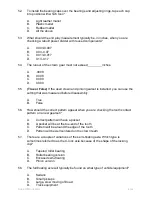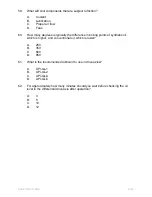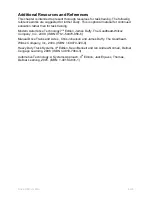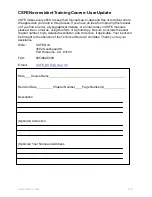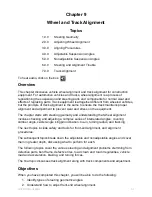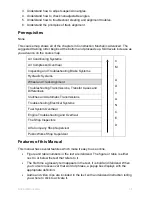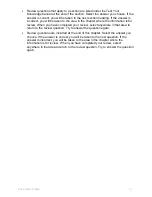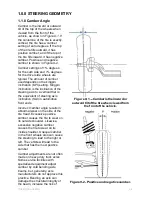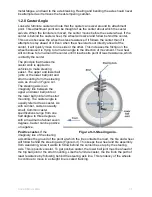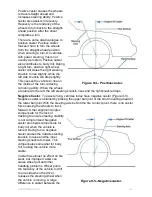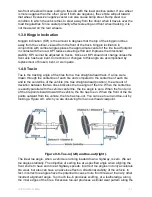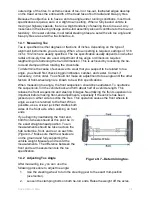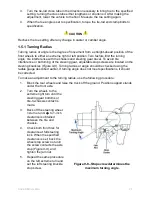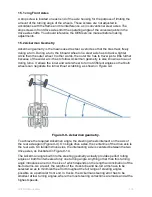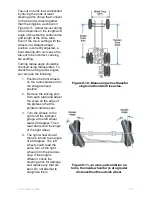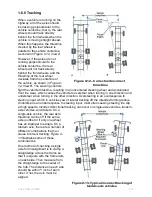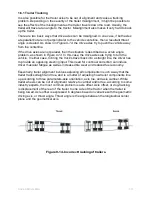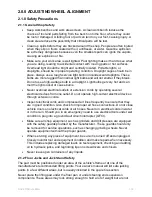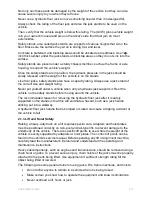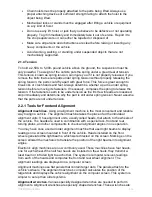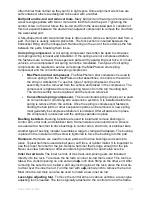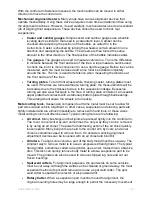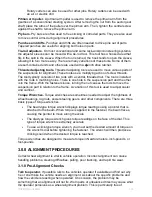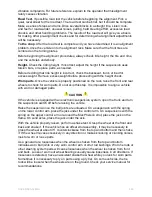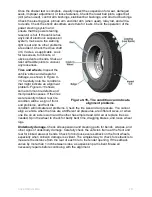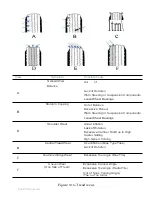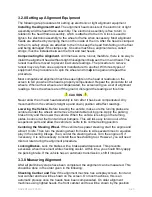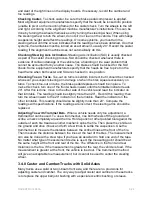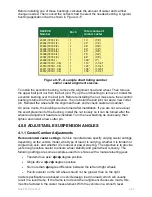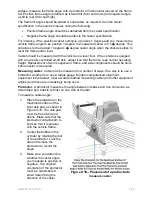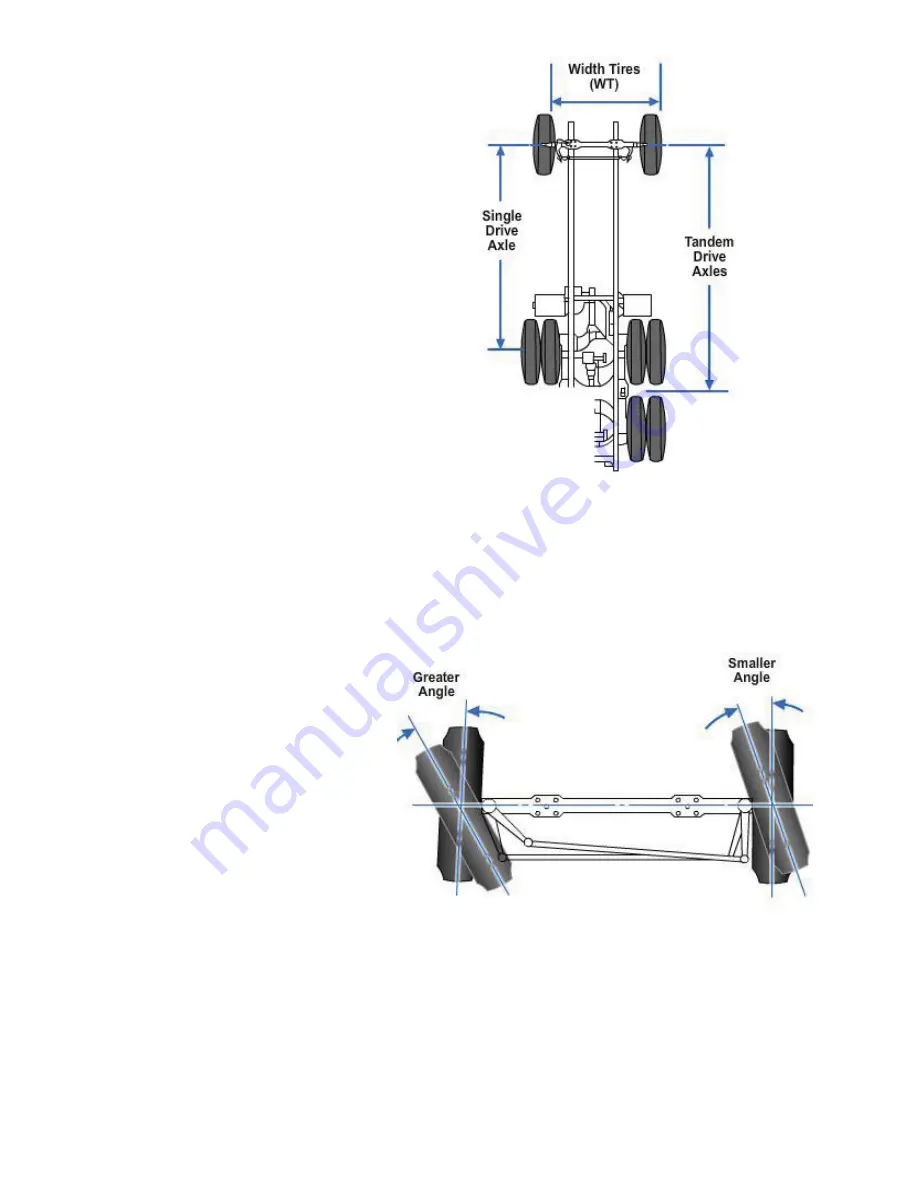
Toe-out on turns is accomplished
by having the ends of lower
steering arms (those that connect
to the tie-rods) closer together
than the kingpins, as shown in
Figure 9-11. Actual toe-out during
a turn depends on the length and
angle of the steering control arms
and length of the cross tube.
Even if the toe-in setting with the
wheels in a straight-ahead
position is correctly adjusted, a
bent steering arm can cause the
toe-out to be incorrect, causing
tire scuffing.
Turning radius angle should be
checked using radius plates. To
check the turning radius angles,
you can use the following:
1. Position the front wheels
on the radius plates and in
the straight-ahead
position.
2. Remove the locking pins
from each plate and adjust
the scale on the edge of
the plates so that the
pointers indicate zero.
3. Turn the wheels to the
right until the indicator
gauge at the left wheel
reads 20 degrees. Then
read and record the angle
of the right wheel.
4. The right wheel should
then be turned to an angle
of 20 degrees. The left
wheel should read the
same turn as the right
wheel did in the previous
step. If the angle is
different, check the
steering arms for damage
and replace any that are
bent. Do not attempt to
straighten them.
Figure 9-10 - Measuring wheel base for
single and tandem drive axles.
Figure 9-11 -
In a toe-out condition on
turns, the inside wheel turns at a greater
distance than the outside wheel.
NAVEDTRA 14050A
9-11

